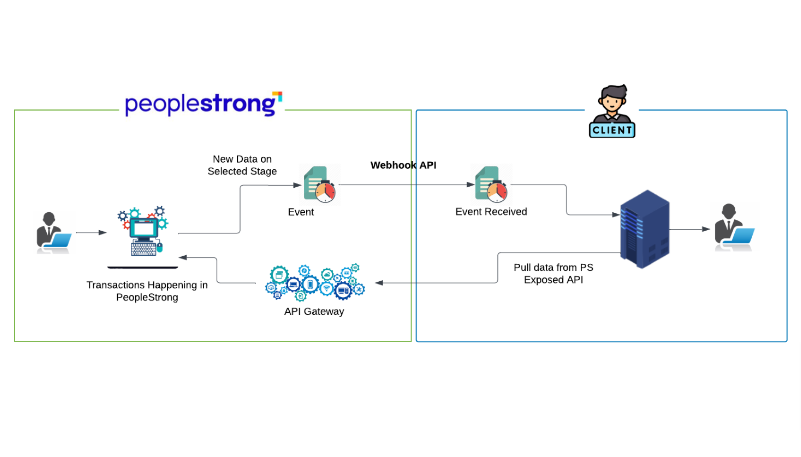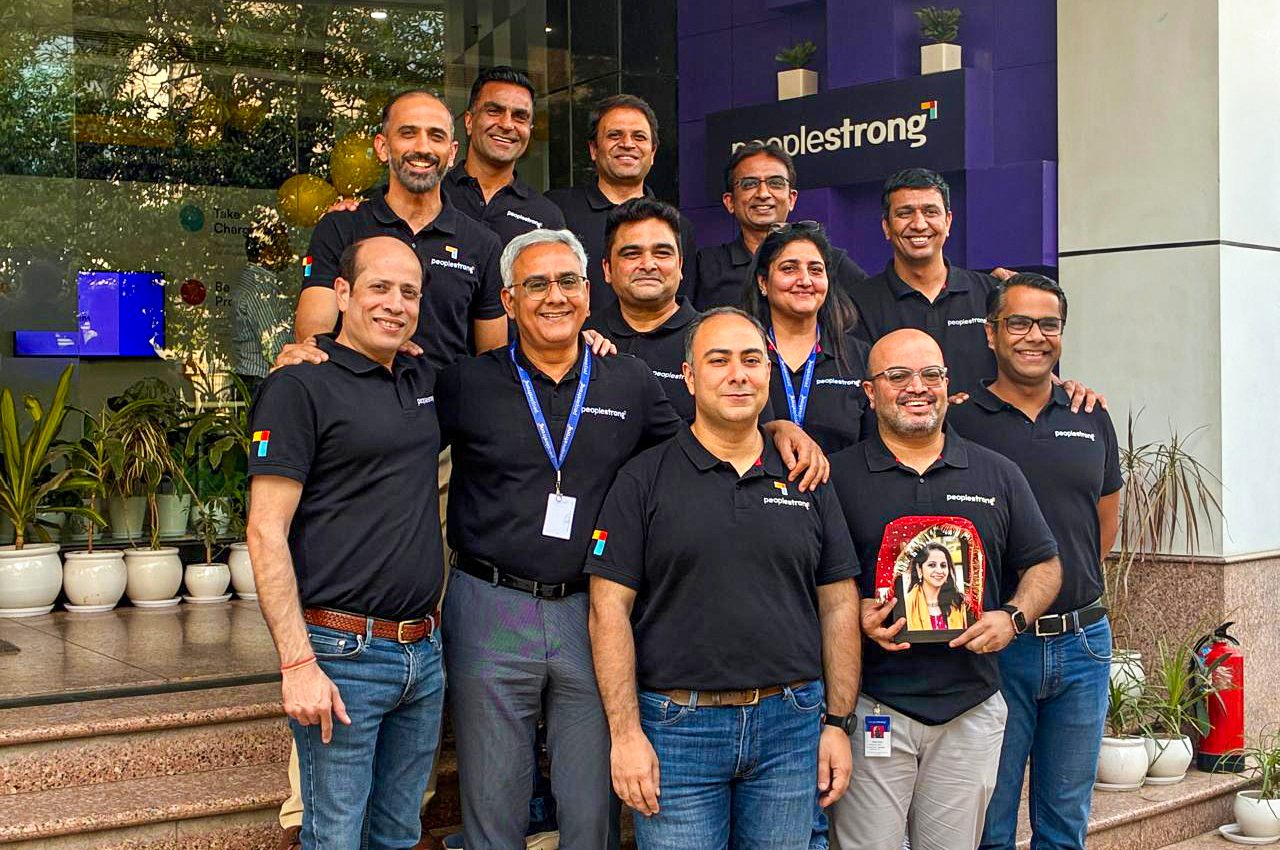Imagine a package delivery service rings your doorbell to notify you of a delivery so that you don’t have to keep checking outside to see if the package arrived or not. You just wait for the doorbell to ring. Similarly, a webhook instantly notifies you when a specific event happens online. In the web world, webhook acts like a tool that notifies you when something specific happens in the application.
In Human Resource Management Systems (HRMS) world, webhooks play an important role in enhancing the efficiency of HRMS integration. It not only enhances efficiency but also reduces costs. In this blog, we’ll explore the benefits of using webhooks for HRMS integration, with a particular focus on cost efficiency.
How Webhooks Work (Step-by-Step):
Event Occurrence: An event takes place in the HRMS, such as a new hire, payroll update, or employee detail modification.
Webhook Notification: The HRMS, configured with webhook capabilities, sends an HTTP request (POST, GET, or PUT) to the external system.
External System Action: The external system processes the data and sends the request to fetch the employee information update, attendance update, performance goal updates, etc.
Confirmation from External System: Depending on configuration, the external system may send a response to confirm that the webhook was successfully processed.
What Peoplestrong Provides
PeopleStrong offers a highly customizable and secure webhook service that simplifies HRMS integrations. Here’s what we provide:
Customizable Headers: Users can tailor the request headers to meet security and operational requirements, including the use of custom tokens for authentication.
Customizable Parameters: You can define specific parameters in webhook requests to ensure that only relevant data is passed along.
Flexible Request Body: Customize the content of the request body, making it easier to structure and send the exact information needed.
Request Methods (GET/POST/PUT): Flexibility to choose the method of the request based on your system’s requirements.
Custom Security: Clients can implement their own security measures through customizable request headers, ensuring data is protected during transmission.
Webhook Auditing: Auditing capabilities allow clients to track and log webhook calls for monitoring and troubleshooting purposes.

Major Benefit of Webhooks
Reduced API Hits
One of the most significant advantages of using webhooks is the reduction in API hits. Traditional APIs require external systems to constantly poll the HRMS to check for updates. This frequent polling leads to a high number of API calls, which can quickly add up in terms of cost. Webhooks, on the other hand, only send notifications when specific events occur, drastically reducing the number of API calls.
Cost Savings for Customers
For customers, fewer API calls mean lower costs. Most API providers charge based on the number of requests made. By switching to webhooks, customers can save a substantial amount of money as they will only receive notifications, when necessary, rather than making continuous API calls.
Reduced Infrastructure Load
At PeopleStrong, implementing webhooks can lead to a significant reduction in infrastructure load. The constant polling associated with traditional APIs can strain servers and resources, leading to increased costs for maintaining the necessary infrastructure. Webhooks eliminate the need for frequent polling, reducing the load on servers and freeing up resources for other critical tasks.
Improved System Efficiency
With webhooks, there is no need to continuously query databases for updates, which enhances overall system performance. Reduced query volume means faster processing times and improved performance for both the HRMS and external systems.
Enhanced Security
Webhooks allow for customizable security measures, ensuring that sensitive employee data is protected during transmission. Clients can implement encryption and secure authentication protocols, ensuring data integrity and privacy.
Use Case in HRMS Integration
In the context of HRMS integration, webhooks are used to notify external systems about various events. Instead of manually checking or polling the system, external platforms receive updates instantly. Below are a few common use cases where webhooks can be applied in HRMS integration:
Hiring Process Notifications: Webhooks can trigger notifications at different stages of the hiring process, such as when a candidate passes the screening, completes an assessment, or schedules an interview.
Employee Information Updates: If an employee updates critical information, such as changing their contact details or home address, a webhook instantly sends the new data to relevant systems like payroll, compliance, or internal tools.
Leave Management: Webhooks notify systems when an employee’s leave request is approved or rejected, keeping the leave balance and payroll systems up to date in real time.
Payroll Processing: When payroll is processed or updated, webhooks can notify integrated systems, ensuring financial systems reflect the latest salary information, deductions, or reimbursements.
Employee Onboarding: Notifications are sent when an employee is onboarded or exits the company, allowing external systems to create or update user profiles automatically.
Attendance Updates: Systems tracking attendance or time sheets can be updated instantly when an employee clocks in or out, ensuring accurate time tracking and payroll data.
Performance Management: Webhooks can notify systems when performance data, such as OKR (Objectives and Key Results) updates, are made, keeping performance tracking tools aligned.
Conclusion
Webhooks offer a more efficient and cost-effective way to manage HRMS integration. By reducing the number of API hits, webhooks help customers save on costs and alleviate the infrastructure load at PeopleStrong. As HRMS integration continues to evolve, adopting webhooks can be a game-changer for organizations looking to streamline their processes and reduce expenses.
At PeopleStrong, we are committed to leveraging innovative solutions like webhooks to enhance our HRMS offerings and provide our customers with the best possible experience. If you’re looking to improve your HRMS integration and reduce costs, consider implementing webhooks – a smarter, more efficient way to stay connected.













